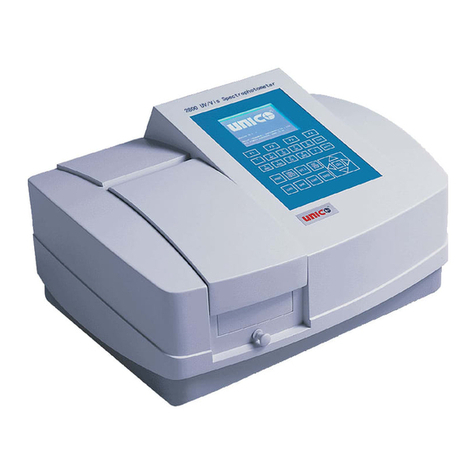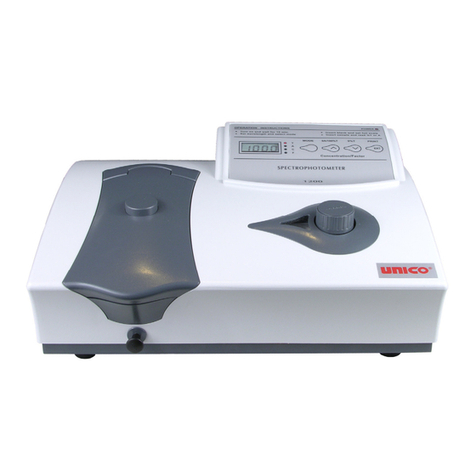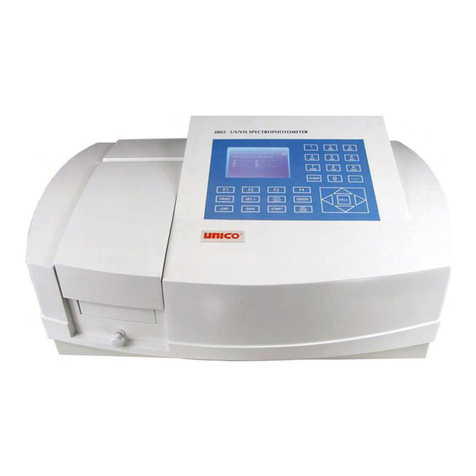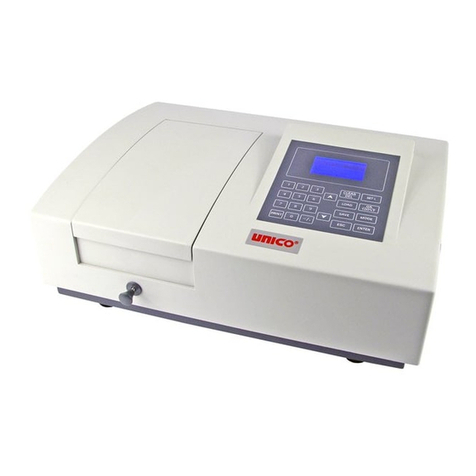General Information
The spectrophotometer described in this manual is designed to be used by properly trained
personnel in a suitable equipped laboratory. For the correct and safe use of this
spectrophotometer it is essential that laboratory personnel follow generally accepted safe
procedures in addition to the safety precautions called for in this manual. The inside of the
power supply unit is a hazardous area and its cover should not be removed under any
circumstances. ANY Servicing must be done by an authorized person. Some of the chemicals
you use in the spectrophotometer may be corrosive, flammable, radioactive, toxic, and/or
potentially infective. Care should be taken to follow the normal laboratory procedures for
handling chemicals and samples.
Safety
This spectrophotometer has been designed and tested in accordance with EN 61326-1: 1997
Safety Requirements for Electrical Equipment for Measurement, Control, and Laboratory Use
standard (EMC Requirements). The spectrophotometer has been tested and supplied in a safe
condition. The safety statements in this manual comply with the requirements of the HEALTH
AND SAFETY AT WORK ACT, 1974.
Electrical
Before switching on the spectrophotometer, make sure it is set to the voltage of the local
power supply (see Installation section). The main plug shall be inserted in a socket provided
with a protective earth grounded contact. The protective action must not be negated using an
extension cord without a protective conductor.
Warning
Any interruption of the protective conductor inside or outside the spectrophotometer or
disconnection of the protective earth terminal is likely to make the spectrophotometer
dangerous. Intentional interruption is prohibited. Whenever it is likely that the protection has
been impaired, the spectrophotometer shall be made inoperative and be secured against any
unintended operation. The protection is likely to be impaired if the spectrophotometer
•Shows visible damage
•Fails to perform the intended measurements
•Has been subjected to prolonged storage under unfavorable conditions
•Has been subjected to severe transport stresses
Performance
Carry out performance checks with reference to wavelength and absorbance accuracy to
ensure that the spectrophotometer is working within its specification. Some performance
checks methods are detailed in this manual.
Interference
For compliance with the EMC standards referred to in the EC Declaration of Conformity, it is
necessary that only shielded cables supplied by UNICO are used when connecting the
instrument to computers and accessories.
































